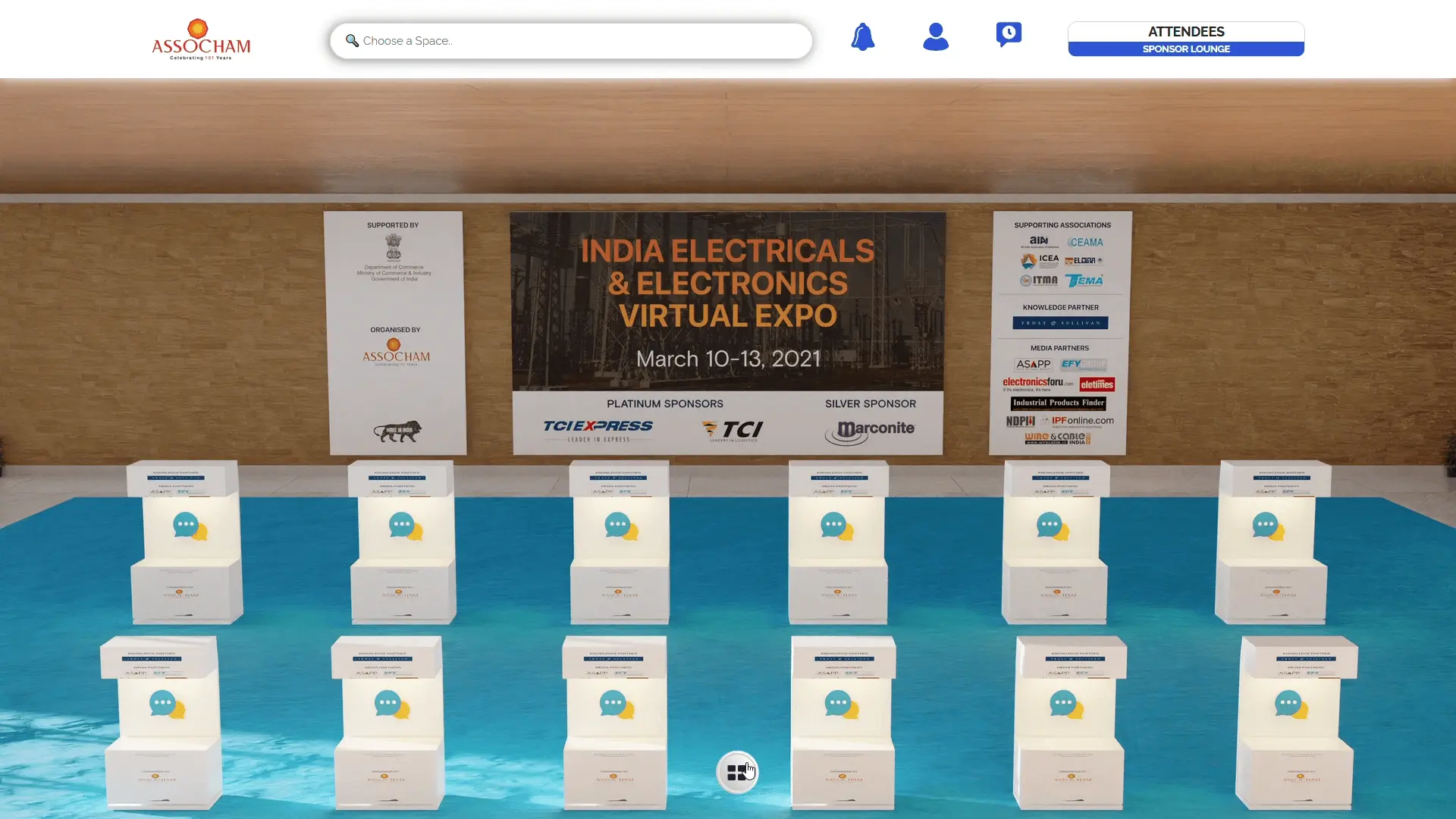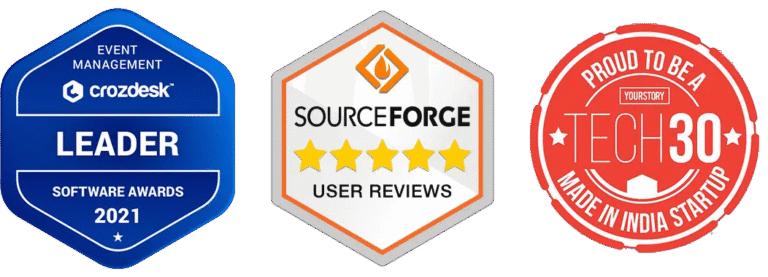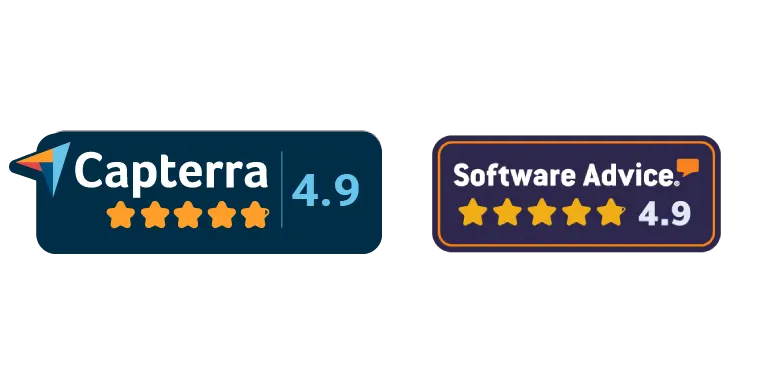Samaaro + Your CRM: Zero Integration Fee for Annual Sign-Ups Until 30 June, 2025
- 00Days
- 00Hrs
- 00Min
One of the major trends in the business world in the last decade was the gradual but, nonetheless, steady shift to the digital space. Major industry players in diverse sectors moved their day-to-day working to the digital world. Adoption of cutting-edge technology has proven to be a key contributor to the robust growth of every business. As a result, traditional ideas associated with conducting business have changed rapidly. Business events too have followed suit, and have shifted to the digital space, be it conferences, tradeshows or exhibitions.
It is true that, covid had played a major role in this paradigm shift to virtual events. But, it would be a glaring error to say it was the sole motivation and the trend is going to change after the pandemic. Virtual event trends in 2022 shows that the market is expected to grow at a rate of cagr of 23% during the forecast period of 2021-2027.
Business events are held to generate more leads, open up avenues to the global market, make new business connections and build a loyal client base. The general question that arises is how do virtual events fit into the strategy of business promotion and growth?
To get an answer to that, let’s take a look at how global brands, major companies are benefiting from the virtual events in terms of driving profit, expanding reach and achieving event goals-
Hosting a physical B2B event is an expensive feat. Add to that, there is an uncertainty whether it’ll resonate with your clients or not. Whereas, virtual events are easy to set up and quick to execute.
For event organizers, that spells lesser cost on venue, no catering charge, zero cost on security and on-hand staff, zero expense on hospitality, accommodation charge for delegates and sponsored speakers.
Instead of that, with a portion of that additional savings, they are focusing more on things that matter – getting renowned speakers, leveraging robust and highly scalable virtual events platforms, creating more experiences that engage the audiences. Furthermore, expanding the sessions to a few days, having more sessions and activities are also in the list.
High-in-demand speakers, renowned industry experts are not always available for in-person events, especially if it’s in a different country. With the traveling time accounted for, it’s a huge time-consuming affair for them to participate. However, in the virtual mode, minus the travel time and check-in time; they are happy to share their insights, views, deliver keynote addresses or take part in panel discussion with other members. And, this is a noticeable trend; we see market experts, industry leaders participating in remote events more than before.

The benefit is two-fold, one, eminent speakers work as a magnet themselves. More people are interested in listening to their insights, views and ideas. Two, most of the speakers cross-promote the event through their profile or organization page. In this way the news of the event reaches more people; people who might not be directly connected to the organizers or the industry.
Data analytics is a key aspect every business owner now focuses on. Because, data and statistics give you actionable insights as they’re precise, minute and based on facts without relying on conjectures.
Virtual events have proven to be gold mines for data collection and an analytics dashboard has become a common feature of every virtual events platform. What insights are organizers or exhibitors gaining from analyzing their event performance?

From the heatmap, behavioral patterns of the attendees are becoming clearer. Organizers can find their preferences- which product they liked the most, which booths attendees visited the most etc. This offers an in-depth understanding of the underlying factors that decide the demand for a particular segment or a product.
However, passive data collection is not the only way to understand attendee preferences. Getting direct feedback from the audience after any event is also essential for this purpose. But, during physical events, getting people to fill out feedback forms or take surveys can come off as a daunting task, which may or may not result in accurate analysis.
However, passive data collection is not the only way to understand attendee preferences. Getting direct feedback from the audience after any event is also essential for this purpose. But, during physical events, getting people to fill out feedback forms or take surveys can come off as a daunting task, which may or may not result in accurate analysis.

On the other hand, in virtual events businesses are giving incentives for filling up the survey forms. For example, giving e-certificates after completing a short survey. Organizers can identify and point out the specific channels that are drawing more clients and devise strategies to generate more revenue in the future.
Combining these two types of data, companies have a database of customers, clients, participants, their demographics, career status, area of interest and detailed feedback of the event.

Virtual events are more inclusive, accessible and accommodative. With an electronic device and broadband connection, people can attend virtual events from anywhere in the world, which directly or indirectly widens the audience population internationally.
Reaching out to more clients and global audiences has now become easier for organizers. The upshot is that, more and more businesses are finding niche audiences in other regions, finding global investors, and international partners.
When you’re hosting any event virtually, you are throwing it open to the global audience. As online events are hosted on scalable virtual events platforms, they can accommodate more people. It has obviated the need to travel across the globe and spend exorbitant amounts on flights and hotels. Business persons, marketers, and sales persons from any Asian and Australian countries can attend a conference, a trade show or an exhibition in Europe or the US.
How are brands benefiting from these?
As we have mentioned earlier, virtual events have reduced the cost for organizers. In turn, this has reduced the participation cost for exhibitors and attendees. This has a powerful impact on the small business.
Now, smaller businesses with limited resources and budget are participating in global events. It is a unique opportunity for small businesses to further their reach and find new clients in a different region and thereby expand their businesses.
This newly emerged corporate marketing channel is being increasingly adopted by businesses around the globe, helping them connect with a larger audience irrespective of their geographical location, to eventually generate leads and conversions.
A diverse audience base means a greater prospect of finding new leads and foraying into a new market space. So, even if your products or services didn’t find resonance in your native area, it might become high in demand in a different area. You can cater to more people’s needs.
Additionally, people from different countries can seamlessly connect with each other. The traditional idea of attending a business conference was to book a flight, check in a hotel, drive to the venue and spend the day there. but now the idea has completely changed.
A survey with marketers and industrialists, states that about 72% of respondents say that they will be attending more online events then they currently are even after the physical events return.

According to a study, 61% of B2B marketers have been able to generate quality leads through webinars. In fact, it has become a widely agreed consensus that online events are one of the most efficient ways to generate leads for businesses. This is largely due to the fact that it allows businesses/event organizers to connect with larger groups of audiences, share content and capture way more data.
Additionally, in an online conference business owners create a product demo, record videos of their products and prepare promotional materials. All of these digital resources are then used in future for marketing and demo purposes. At their hand is a continuous source of lead generation tool for months after the initial event.
Lead nurturing is as important as lead generation. This means keeping in touch with them for future events and a gentle nudge from time to time to update them with relevant information. Data gathered from virtual events become the primary source of information for future communication, further resulting in fruitful lead generation.

Hosting virtual events not just benefits the organizing company, but also gives substantial value to the associate sponsors and exhibitors. Online events ensure a greater engagement rate and audience connectivity as compared to physical events.
Analytics dashboard also plays a pivotal role in tracking the leads. At virtual events, personalization begins at the very moment someone registers. Based on their interests they can recommend booths, similar attendees, products etc.
On the other hand, a robust exhibitor dashboard empowers sponsors and exhibitors to analyze the prospects that come on to the booth and connect with them. They are also enabled to access various data points such as number of people who came to the booth, most downloaded resources and products they showed interest in.
We do not know whether the COVID pandemic is planning to rage on or fade away, but one thing is for sure- Virtual events are here to stay. With its cost-effectiveness, engagement and immersive experiences to provide audiences with, companies around the world are already witnessing its tremendous impact converting it into one of the mainstream event channels.

Built for modern marketing teams, Samaaro’s AI-powered event-tech platform helps you run events more efficiently, reduce manual work, engage attendees, capture qualified leads and gain real-time visibility into your events’ performance.


© 2025 — Samaaro. All Rights Reserved.